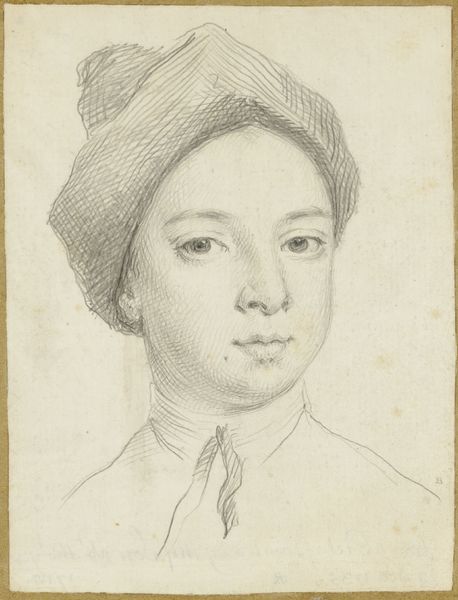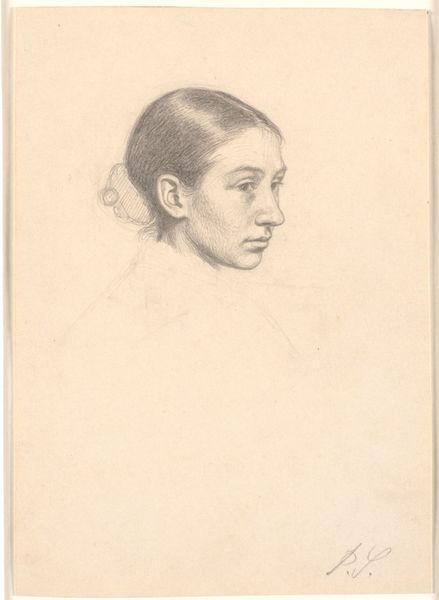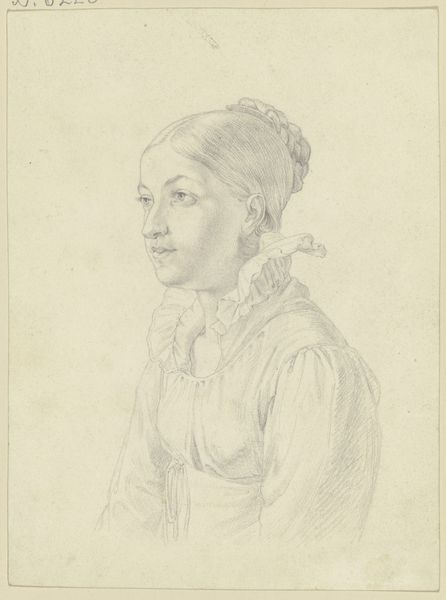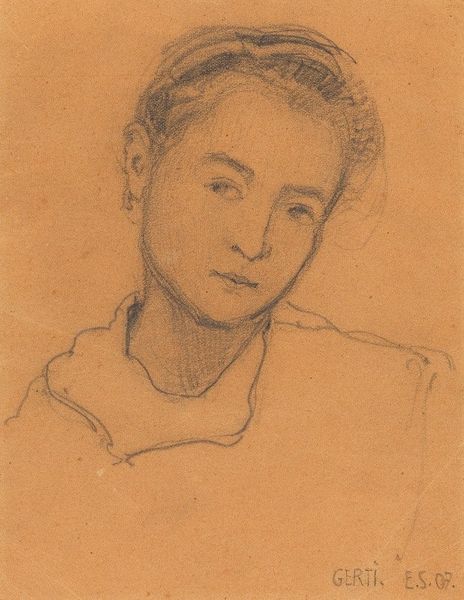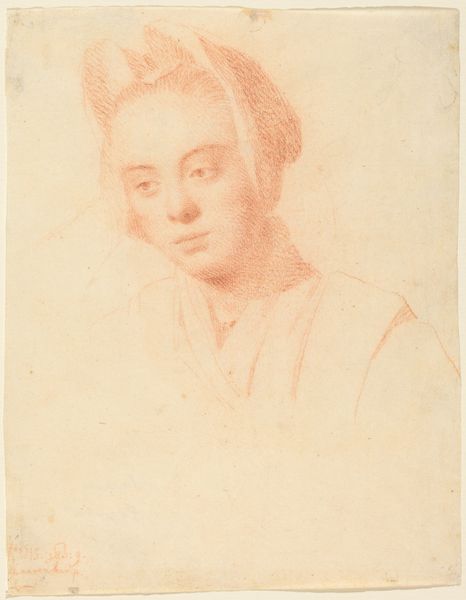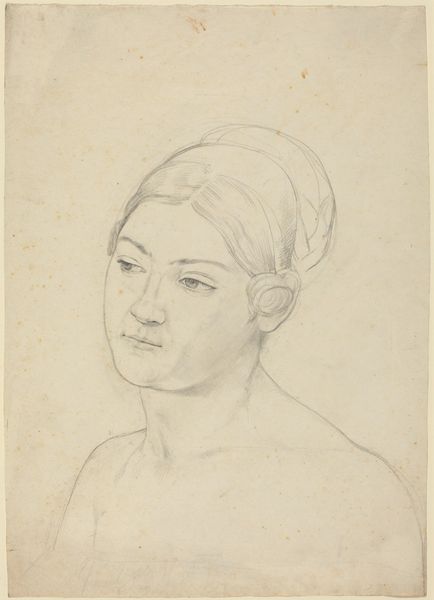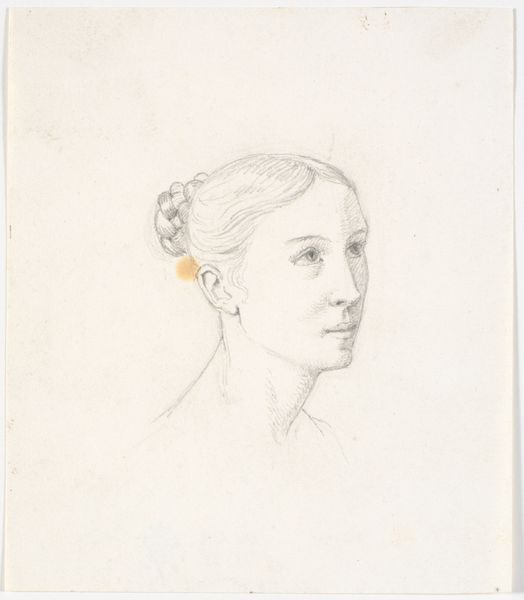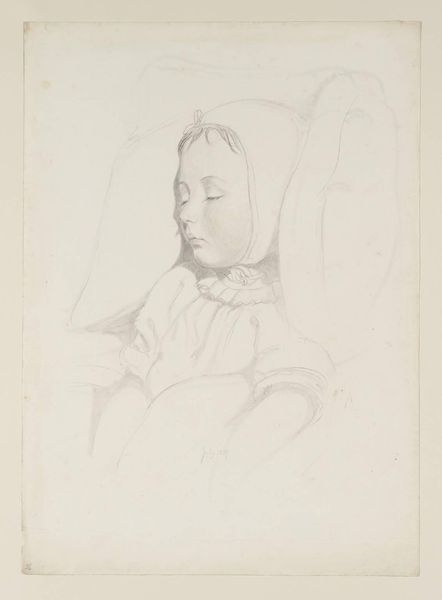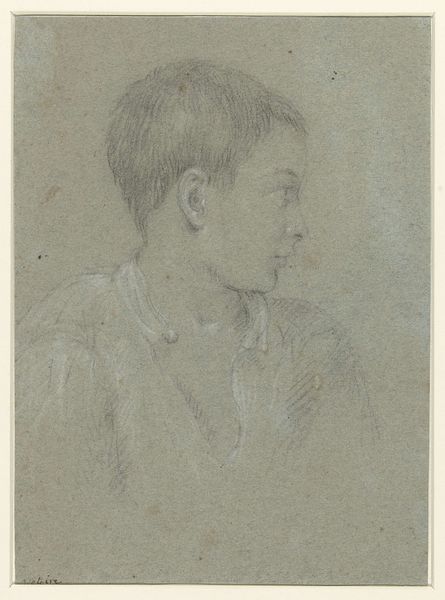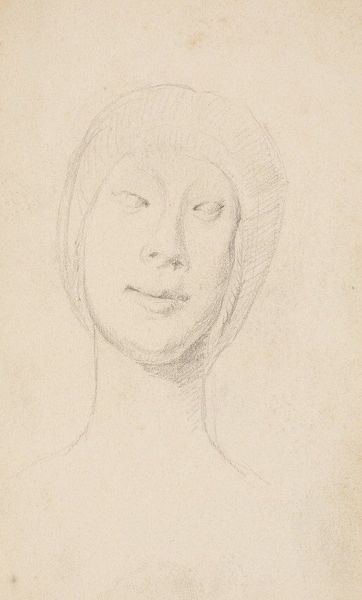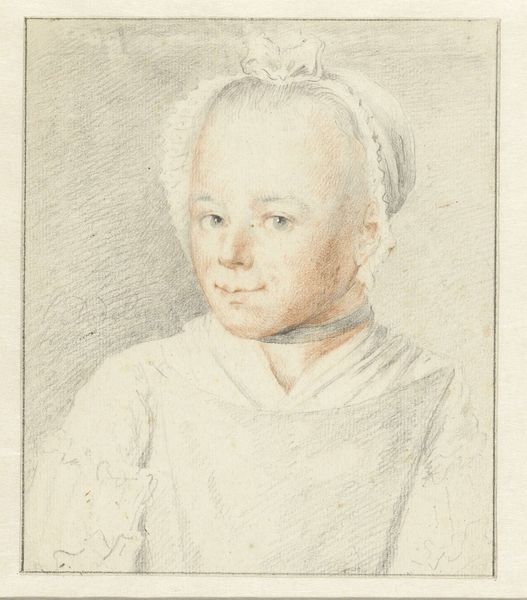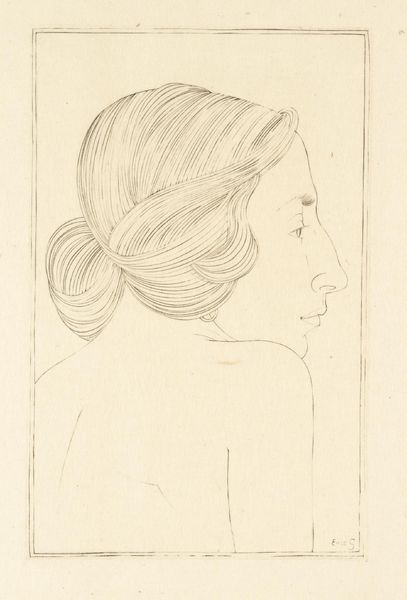
Dimensions: height 259 mm, width 231 mm
Copyright: Rijks Museum: Open Domain
Curator: Look at this delicate pencil drawing; it’s titled “Head of a Girl,” made in 1779. The artist, Judith M. Testart, really captured a quiet, almost melancholy mood. What are your first impressions? Editor: I notice how the softness of the pencil lends an air of intimacy to the subject. The visible strokes and the unfinished state around her shoulders gives insight into the process itself, right? It's about more than just the final image; it's the act of rendering itself that holds my interest. Curator: Precisely. And thinking about the historical context, these types of portraits were often made within a certain social framework, perhaps for family keepsakes or betrothal announcements. I'm struck by the girl's gaze – slightly averted, suggesting perhaps a lack of agency common to women in that era. Does this reflect or subvert prevailing power dynamics, though, considering the artist was female? Editor: Good question! I'm also drawn to the materiality of the drawing—the choice of pencil, the paper. In the late 18th century, what would these materials have signified? Who had access to them? It gives me insight into the world the artist and the subject inhabited. Was this commonplace or a luxury for her station? The physical traces left by the artist's hand become crucial evidence. Curator: Indeed. Looking through a feminist lens, perhaps Testart’s intent was to provide an empathetic representation of female youth – something more than mere objectification. It would serve to subvert expectations surrounding femininity at the time. Editor: The softness and the limited palette highlight the sitter's vulnerability but what does it say about artifice or presentation? I am wondering to what degree, if any, Judith Testart might have embellished, altered, or presented her to conform with norms about acceptable presentation to social superiors or peers. It opens to many possible conversations that invite the viewer to project stories and meaning onto her identity and potential lived experiences. Curator: Absolutely. Examining artwork like this pushes us to consider larger societal constructs while understanding the personal experiences represented in them. It definitely deepens the art experience. Editor: Agreed. Analyzing art with this type of multilayered approach ensures these pieces stay relevant, prompting further examination.
Comments
No comments
Be the first to comment and join the conversation on the ultimate creative platform.
